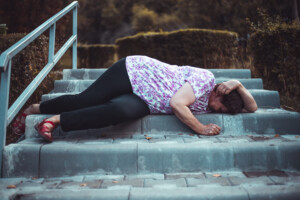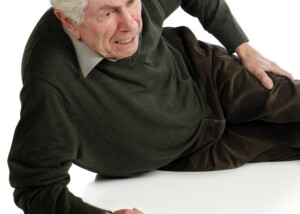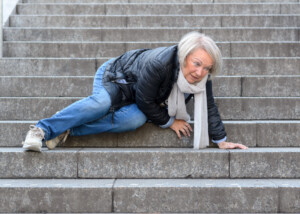Don’t be so quick yet to rely on only vitamin D to prevent falls in your elderly body; it’s crucial you get an exercise program started!
Though a daily dose of vitamin D has many benefits, the area of fall prevention is just not one of them, says the revised recommendations from the U.S. Preventive Services Task Force.
Let’s first look at this from a simple, layman’s perspective. Imagine two 74-year-old ladies.
One doesn’t exercise but takes a vitamin D supplement every day. The other doesn’t take a vitamin D supplement but lifts weights.
Imagine now, what these elderly women might look like, side by side.

The Task Force does not endorse vitamin D for the prevention of bone fractures and hence, does not advise supplementation for most older women, including high doses.
Exercise for the Prevention of Falls in Older People
“Exercise designed to target fall prevention strengthens important muscle groups and joints in order to improve balance,” says Monica Charlton, a senior exercise specialist and certified Silver Sneakers/personal trainer out of New Orleans.
“Maintaining a healthy vitamin D intake will strengthen bones and potentially improve outcomes if a fall occurs, but only exercise itself can reduce the risk of actually falling.”
So what precisely might strengthen bones and thus, hinder the chances of fractures?
How about something that forces muscles to pull on the bones? This would promote increased bone density.
What forces muscles to pull on the bones?
LIFTING WEIGHTS. Vitamin D does not make muscles pull on the bones.
How to Help Prevent Falls in the Elderly with Exercise
The Task Force does not endorse supplemental vitamin D for senior aged people who live in the community who do not have a diagnosis of osteoporosis or a known vitamin D deficiency.
Yet falls from merely walking occur quite frequently in people over age 65.
Fall risk is upped by a variety of factors including the side effects of medication, hearing loss and cognitive decline.
However, many falls in elderly age occur due to brittle bones (from lack of weight-bearing exercise) and a weak neuromuscular system (from lack of weight-bearing exercise).
Recommended Types of Exercise
• Endurance training such as brisk walking
• Individual and group exercise classes
• Functional training type exercise (e.g., kettlebell swing, walking lunge)
• Strength training (lifting weights)
The Task Force is not saying to stop taking supplemental vitamin D.
What it’s urging is to cease depending on vitamin D for fall prevention, and instead to rely on an exercise program.
The USPSTF in its updated recommendations (2018) advises against vitamin D up to 400 IU/day (and 1,000 mg/day for calcium) for the purpose of preventing fractures.
Evidence is lacking to support the premise that even higher doses will help prevent broken bones. There just is no substitute for exercise.
And by the way, if you use a treadmill, do not hold on;; here are treadmill guidelines.
In summary, exercise beats vitamin D supplementation for lowering the risk of falls in elderly people.
The Task Force emphasizes that its updated advisement does NOT apply to senior people who have a history of osteoporotic fractures, a diagnosis of osteoporosis or a known vitamin D deficiency.











































